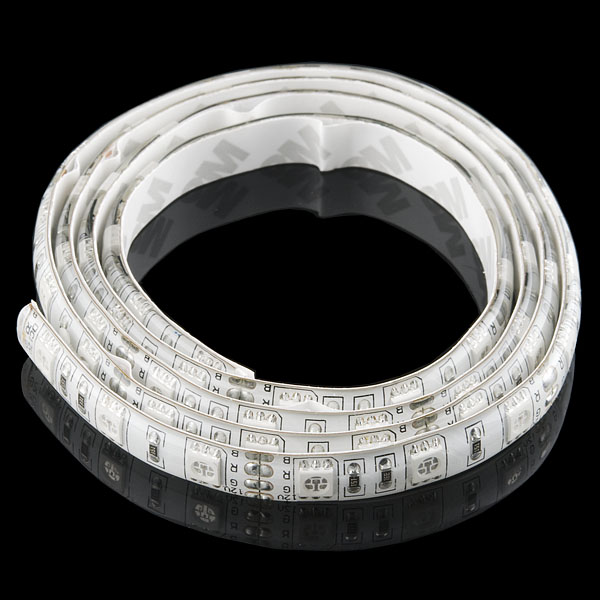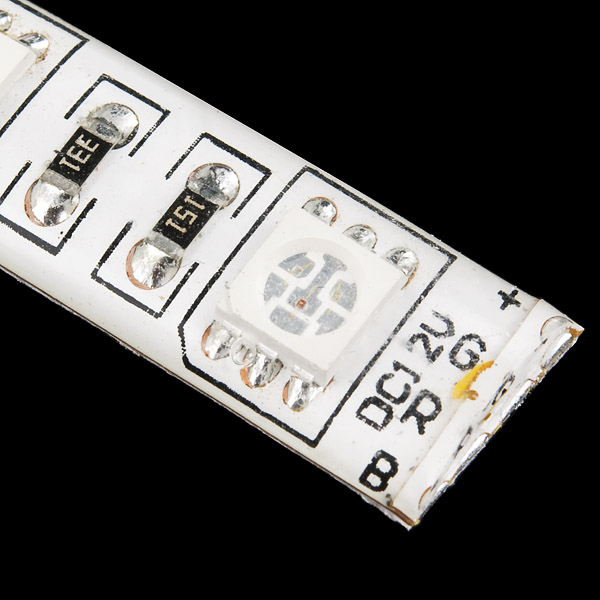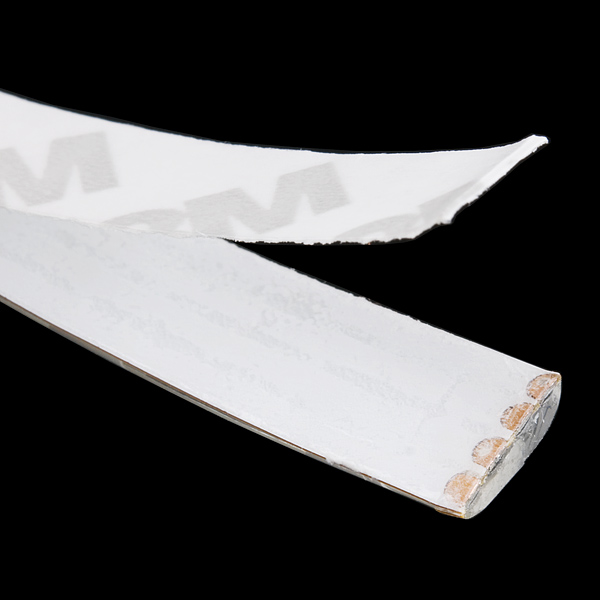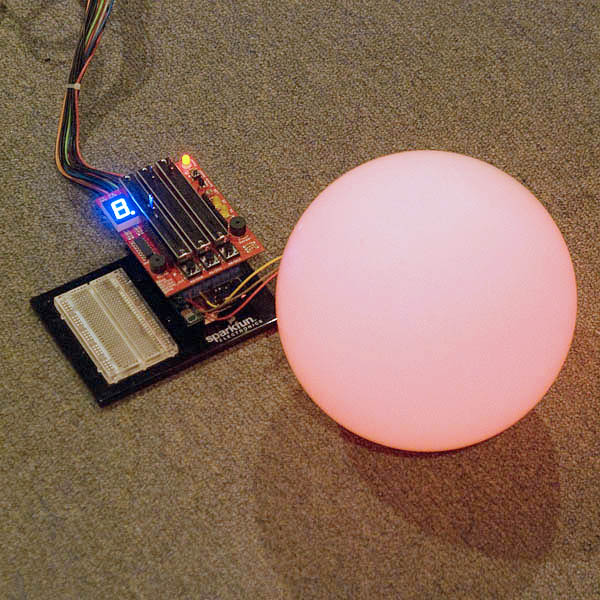RGB LED Strip - 60 LED/m - 1m
Replacement:COM-12023. Our new version of this RGB LED Strip fixes the issues with the cracking silicone protection and comes pre-terminated with wires. This page is for reference only.
These LED strips contain 60 RGB LEDs per meter. The strips have a self-adhesive backing that you can use to stick the strip to cabinets, enclosures or the dash in your car (probably not recommended). They include current limiting resistors, so just add 12 volts and you're good to go.
Oh, and did we mention they are waterproof? They are IP66 rated which means they can handle a pretty good soaking of water.
Note: These come pre-cut to 1m lengths. You will need to solder on your own wires.
Note: We just realized the green and blue labels have been swapped.
Comments
Looking for answers to technical questions?
We welcome your comments and suggestions below. However, if you are looking for solutions to technical questions please see our Technical Assistance page.
Customer Reviews
No reviews yet.





In my own tests, these appear to be at least IP67. They work submersed in a meter-deep hot tub.
Oh neat. Geeze guys pretty soon you'll have everything I need to do anything. :P
This contributed to the BEST HALLOWEEN COSTUME EVER!
I was a LASP satellite, and these LEDs lined my satellite, pulsing with random colors in response to sound. (Great for dance music!)
I used 2m of these LEDs, 6 MOSFETs, and 2 photoresistors to create a replica of the Total Irradiance Monitor instrument, built by LASP in Boulder, flown by NASA into space. My costume not only had dance lights (which even the real TIM doesn't have!), it also has a radiometry mode, in which the lights indicate the light detected with the separately gimbaled TIM instrument (also made of cardboard).
(I am about to start work at LASP as an engineer on the next version of this instrument!)
The whole thing was powered by 8 C-cells, which provided 12V to both the LED strands and the Arduino plug-in external power supply, which was very handy.
The LED strands (which I LOVE) did not stick super-well, and, after spending the night in the car, one of the strands snapped when I tried to bend it back into place. Whoops! Should have let it warm up.
But it was a great costume that garnered lots of attention on the mall last night. ;-)
I just got 2m of this in the mail (its really cool), and discovered that labels are wrong. At least on my strips, the cathode labeled G is the blue cathode, and the cathode labeled B is the green cathode. The 12V anode and R cathode are labeled correctly.
Also, in case it helps people, I measured the current (@12V) in a single 3 LED strip and got:
50mA -- red + green + blue
16mA -- blue
18mA -- red
16mA -- green
What is the diffuser sphere in the last picture? I am looking for something really similar to this. I need to use a 3W rgb LED and make it into an eye for a big costume. This would be perfect.
So to hook this up, (positive is obviously positive voltage) would you connect ground to r, g, & b connections?
Yep - the strip has current limiting resistors on board. Just connecting it to ground would make it a sad strip, though - have a look at ready-made RGB controllers (plenty on e-bay), kits or Arduino examples. Just make sure you keep that Common Anode configuration in mind!
Can these be cut to shorter lengths?
Yes, you just need to cut along the solder joints
Anybody recommend a power supply to use with this? The 12v supply on Sparkfun is rated for 600ma. If I'm reading the datasheet right, each 3 RBG LED segment is 60ma. So that's a max of 10 segments (30 LEDs), or 1/2th of a meter!
Depending on what you're doing, especially if you are controlling the strip with a microcontroller, if you make sure you don't blast all three colors, R,G,B, on full at the same time, you will probably be ok. Like if you were trying to make a trippy R --> G --> B fade, you might be able to stay under the max current limit. Also, even the most modest of hackers has a box of old wall wart adapters. Check those out, almost all of them show output voltage and current rating. Find one that suits your needs and hack off the end, double check the polarity, and use that!
If you're near a wall socket, a computer power supply (new or pulled out of a junked machine) is a good choice. On battery you might look at multi C or D-cell packs, or a rechargeable sealed-lead acid (SLA) battery like those used in security lights.
seems like 10 of these are cheaper than 2 of the 5m equivalent. Correct?
This stuff is awesome! Good hook-up instructions here: http://www.ladyada.net/products/rgbledstrip/
How reliable is the adhesive back? And to which material does it stick?
These things are BRIGHT! BTW, I measured the entire 1 meter strip taking 895 mA @ 12v...
Cool price. What is the best way to control this by an arduino? BlinkM MaxM? Power Driver Shield Kit? Other?
are the 60 led/m strips individually adressable?
no, only the ones labeled addressable.
Made a hat band with this, controlled by Arduino's RGB example, with slight modification. Outstanding!
So they are waterproof even though I can see solder joints on the outside?
They have a clear, flexible silicon rubber coating on them.
What else do I need for it (how many and what type wires, etc) to be controlled by an Arduino UNO? Thanks!!
You'll need a soldering iron, some hook up wire, 3 NPN transistors, and a few resistors.
What are the dimensions on the strip - thickness? width?
Using a ruler I got:
width: 1cm
thickness: 3mm
length of 3 LED segment: 5cm